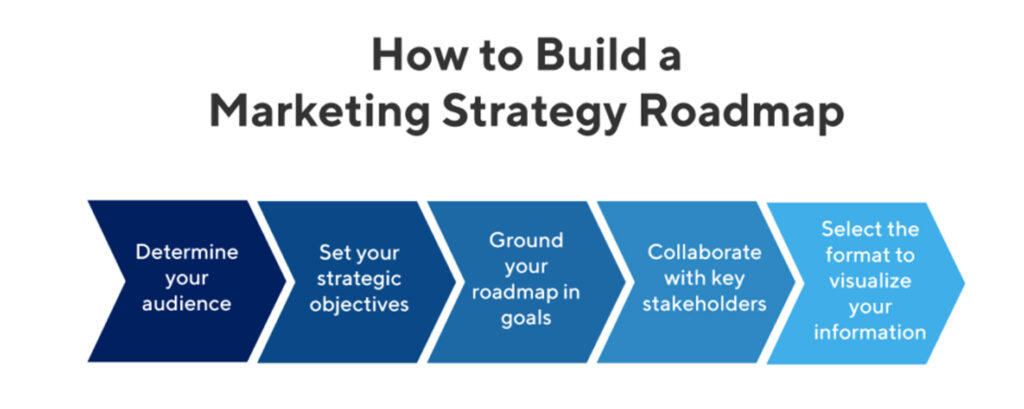Marketing for manufacturers is about gaining brand awareness, converting prospects, and growing business success. To achieve those goals, it’s important to understand the differences between strategic marketing and tactical marketing.
Today’s consumers rely heavily on the internet for business transactions. More than 2 billion people across the globe make online purchases. As a result, brands must develop digital marketing strategies and tactics that help boost business. From SEO basics for manufacturing and industrial companies that drive website traffic to content marketing for manufacturing companies, strategic marketing and tactical marketing are essential for overall success.
Keep reading to learn the difference between strategic marketing and tactical marketing and which method is most effective for continued growth.
Key Takeaways
- Strategic marketing is gathering information to make educated and calculated marketing decisions.
- From shaping your overall advertising approach to maximizing efficiency, strategic marketing offers numerous benefits to your company.
- Tactical marketing is your company’s actions to put your marketing strategy in motion.
- With tactical marketing, teams have clearly defined tasks that keep them on track to help you achieve your marketing goals.
- A successful marketing campaign implements strategic and tactical marketing, resulting in a well-rounded effort that propels you toward reaching your goals.
Strategic Marketing and Why it’s Important
Strategic marketing is gathering information to craft a marketing approach that is the most likely to yield the best results. It encompasses:
- Audience research: Learn buying habits and demographics that help you better understand your target market.
- Analyzing competitor offerings: Know what you’re up against in your market to see how you can outperform the competition.
- Identifying gaps in the marketplace: See where your solutions can fill an unmet need.
- Recognizing areas of weakness: Identify which efforts are working well for you and what areas need improvement.
Strategic marketing considers your long-term goals and provides the insight necessary to formulate a plan of action for your marketing campaign.
Strategic marketing is important for several reasons. It helps to shape your overall marketing plan, providing the information you need to design an approach that best meets the unique needs of your specific audience. It helps you create a path to follow with metrics that can help keep you on track to meet your marketing goals. Strategic marketing provides a solid plan for workers, eliminating confusion and frustration and building stronger teamwork.
It also promotes efficiency, clarifying how to best use your advertising dollars and other resources for effective marketing plans. From website must-haves for manufacturing companies to personalize messages that reach people at the right time and through the right channels, strategic marketing helps decrease waste and maximize your resources with an informed and effective approach.
Tactical Marketing and Why it’s Important
While strategic marketing identifies the path a company can take to reach its goals, tactical marketing is the specific actions a company takes to work toward its marketing objectives.

The information businesses gather during strategic marketing helps guide tactical marketing efforts. Tactical marketing includes:
- Publishing blog posts
- Posting and engaging on social media
- Hosting live and virtual events
- Distributing email campaigns
With tactical marketing, companies assess budget, resources, time, and metrics to determine realistic, actionable steps they can take to execute their strategy and meet their objectives.
Tactical marketing is important because it helps to put your plan into motion. Teams have clearly defined tasks that support bigger objectives, moving your projects from concept to completion. With a constant process of action, assessment, and optimization, tactical marketing aligns goals and progress. Without it, the strategies you previously developed couldn’t be possible. Tactical marketing carries out those plans, helping to propel your business toward growth and success.
How to Combine Strategic Marketing with Tactical Marketing
When creating an effective marketing plan, should you focus on strategic or tactical marketing? Ideally, your plan will include both. After all, you must first have a clear direction of what needs to happen to know what actions to take to meet your marketing goals. You can combine strategic marketing with tactical marketing in three main steps.
Step 1: Set Clear Objectives
You must first identify what you’re trying to achieve with your marketing strategy. Set clear objectives for your marketing plan. This could include:
- Increasing traffic to your website
- Generating more leads
- Earning higher conversions
Whatever your objectives, it’s important to define them so every team member understands the mission and their role in meeting those goals. As you determine your objectives, consider creating SMART goals that are:
- Specific: Clearly outline what you hope to accomplish.
- Measurable: Assess and demonstrate your approach’s effectiveness in meeting your goals.
- Achievable: Unrealistic or unattainable goals are discouraging.
- Relevant: Goals must align with your mission.
- Timely: Deadlines keep you on track for success.
SMART goals can help to boost productivity, manage time, and motivate teams toward success.
The following video provides more details and useful examples of effective SMART goals that can help improve your business:
Source: Develop Good Habits on YouTube
Step 2: Map Out a Strategy
Once you know your objectives, you can begin mapping out a strategy to help you reach the finish line. Outline the research needed to gain the information that will help shape your marketing approach. Learn who your audience is and what their needs are. Monitor chat threads and discussion forums to see what they’re saying about your company and your competitors. Collect the intel you need to create an impactful strategy that will help you achieve your specific objectives.
Once you’ve identified your target audience, you can evaluate your resources and determine what actions you need to take to position yourself as a leading provider for your specific solution. This strategic marketing can then serve as a blueprint for the next step in your plan.

Step 3: Implement Tactics
With a strategy in place, you can begin to outline the actions you’ll need to take to accomplish your goals. If your marketing goal is to boost website engagement, then your strategy is to build a site that is intuitive and customized for your target audience. Your tactics could include website must-haves for manufacturing companies, like designing clear Call-to-Action buttons positioned prominently on the home page.
As you implement tactical marketing into your marketing strategy, you should continually evaluate its efficacy. Metrics can reveal invaluable information about how people engage with your brand and whether your efforts are working as efficiently as they should. Adapt your strategy and tactics as needed to ensure your marketing campaigns are helping you reach your goals and bringing you overall success.
Reach Your Marketing Goals
Shanahan Strategy builds strategic digital marketing strategies and tactics that help raise brand awareness, increase conversions, and deliver invaluable insights.
Contact Shanahan Strategy today to learn how we can help you reach your marketing goals.

